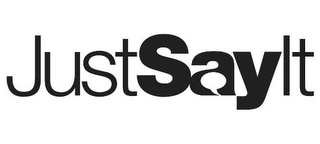Cheryl Bauman-Buffone applied to register the mark JUST SAY IT in the stylized form shown below.

Nike opposed the registration based on its JUST DO IT trademarks in Nike, Inc. v. Cheryl Bauman-Buffone, Op No. 91234556 (TTAB 2019).
When the Trademark Trial and Appeals Board considered the similarities between the marks, it said, “The stylization of Applicant’s mark is essentially irrelevant, because Opposer’s [Nike’s] mark is registered in standard characters and typed forms, and could be displayed in any font or size, including in a manner similar to Applicant’s display of JUST SAY IT.” (emphasis added).
A standard character mark usually provides the broadest protection over the underlying words/characters of the mark. This is so, because the registration is not limited to any particular font or stylization of the mark. My prior article on Words or a Logo or Both in a Trademark Application? provides more factors to consider when choosing what to include in a federal trademark application.
Ultimately, the Board refused the registration Bauman-Buffone’s mark. While the similarity of the marks was not the only factor that lead to the refusal to register, it was an important factor.